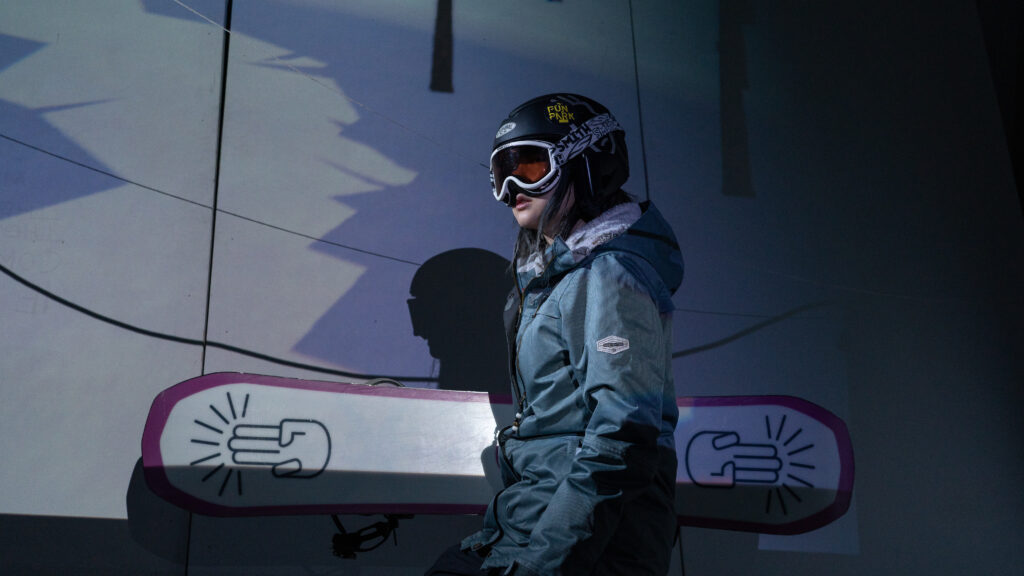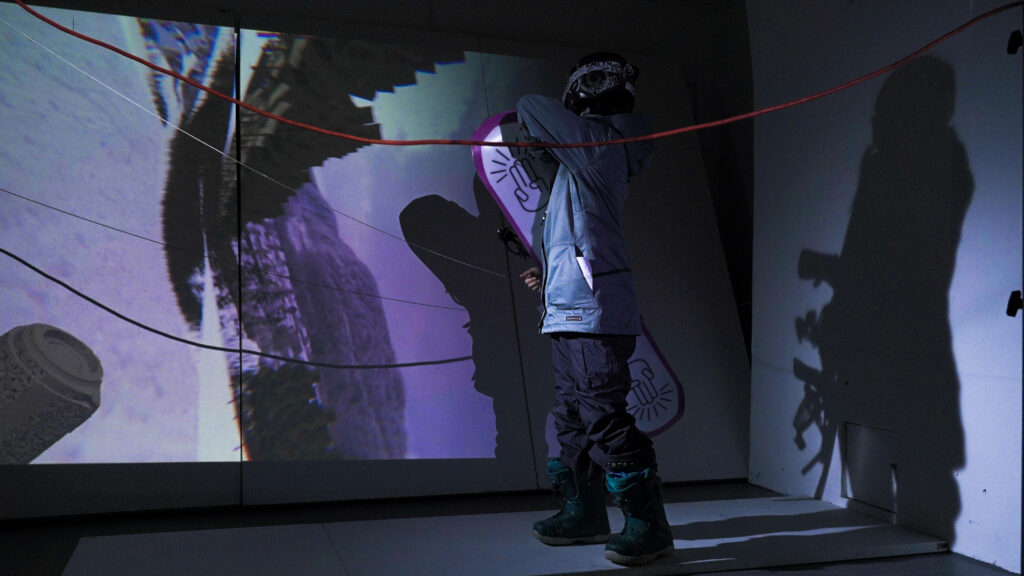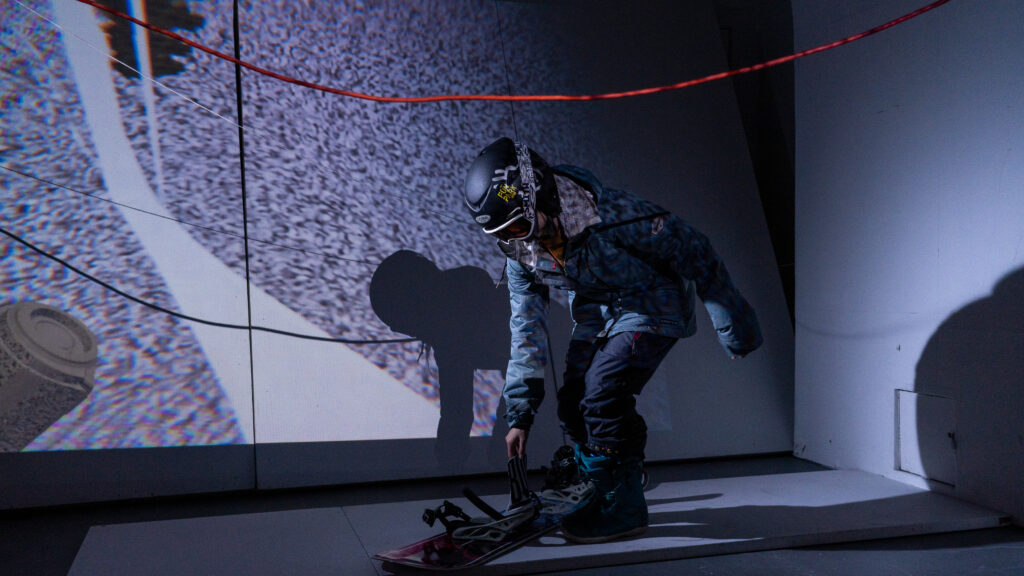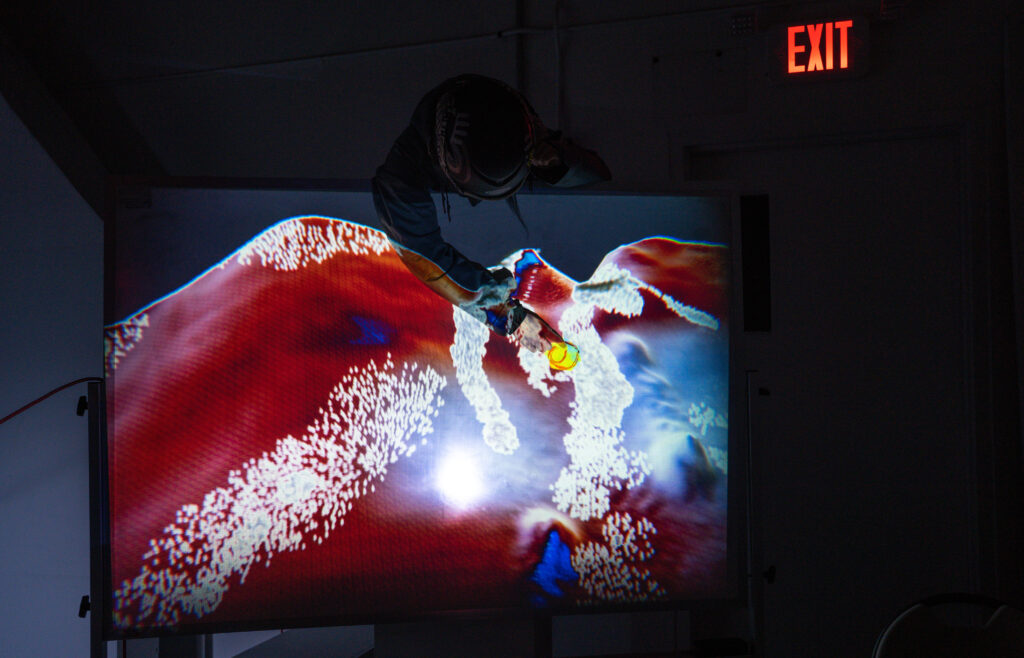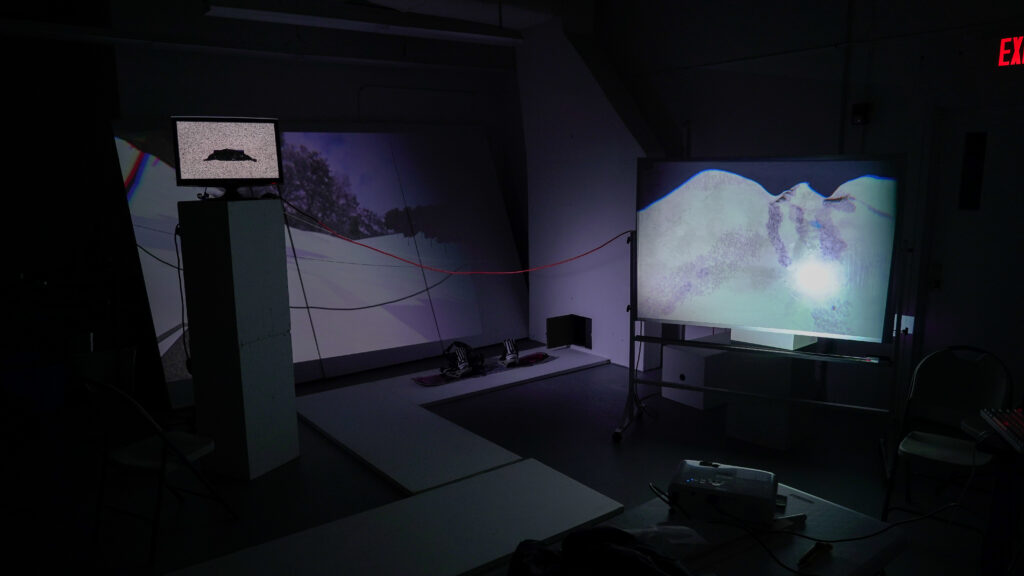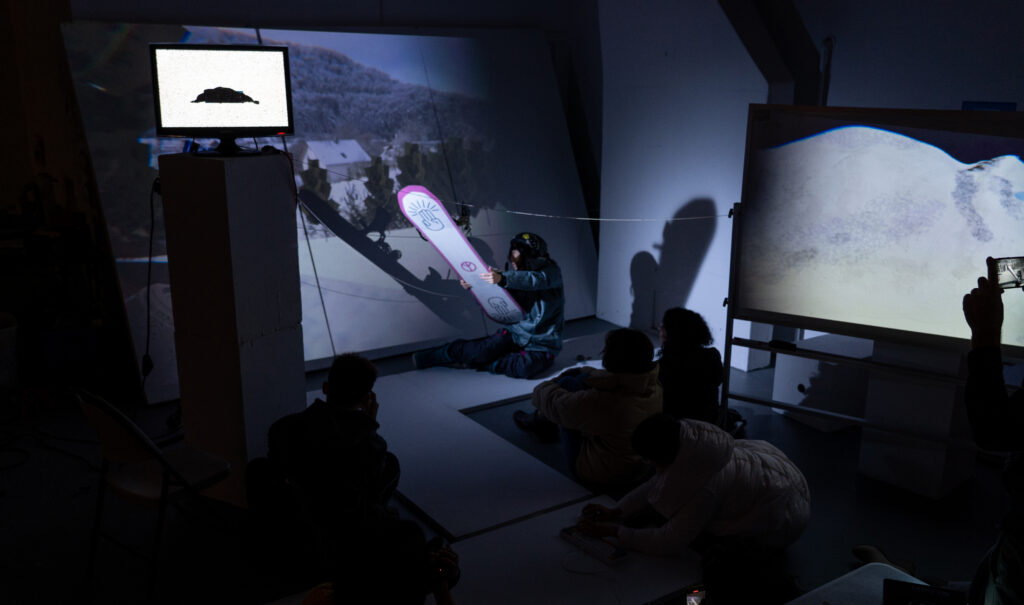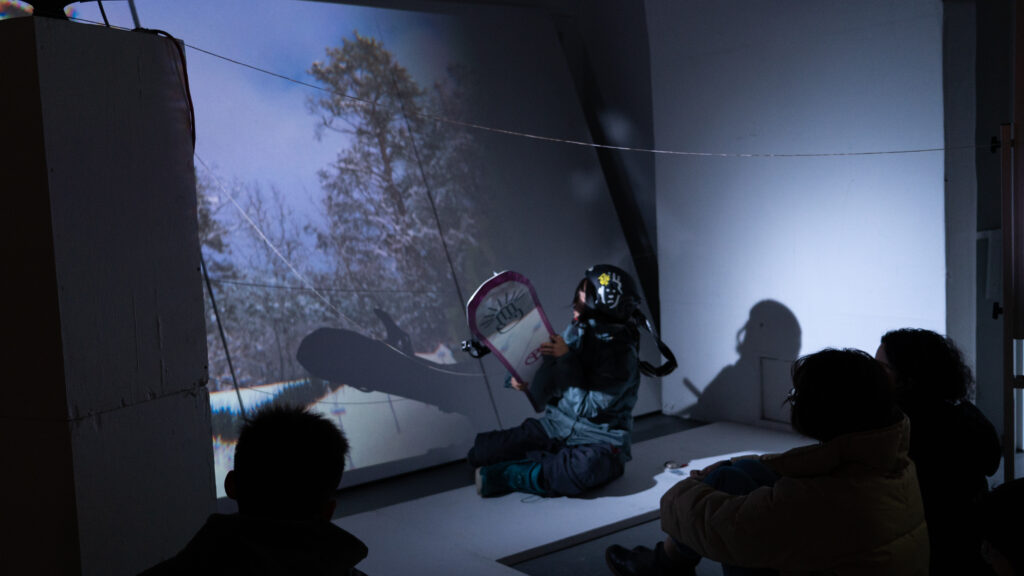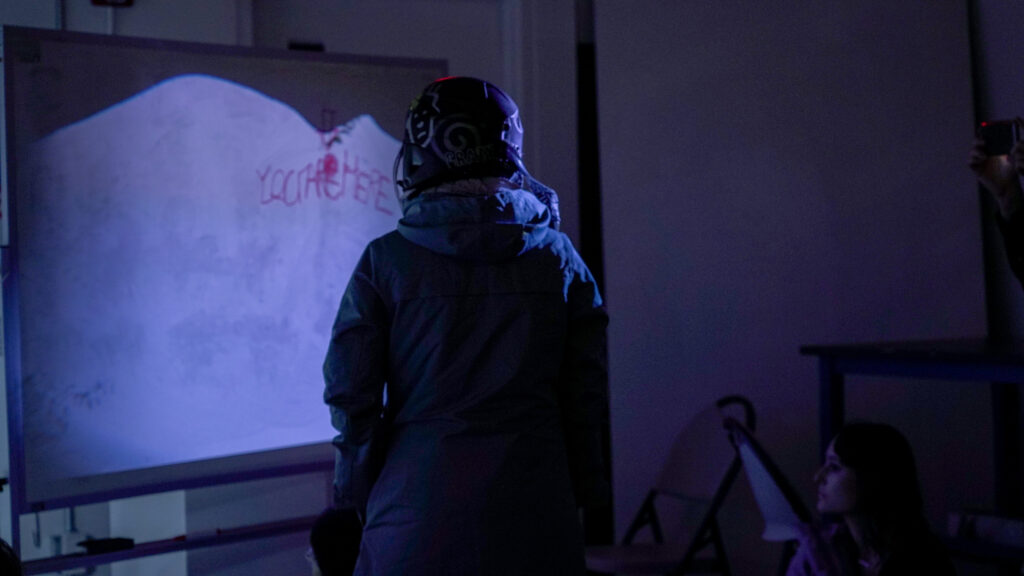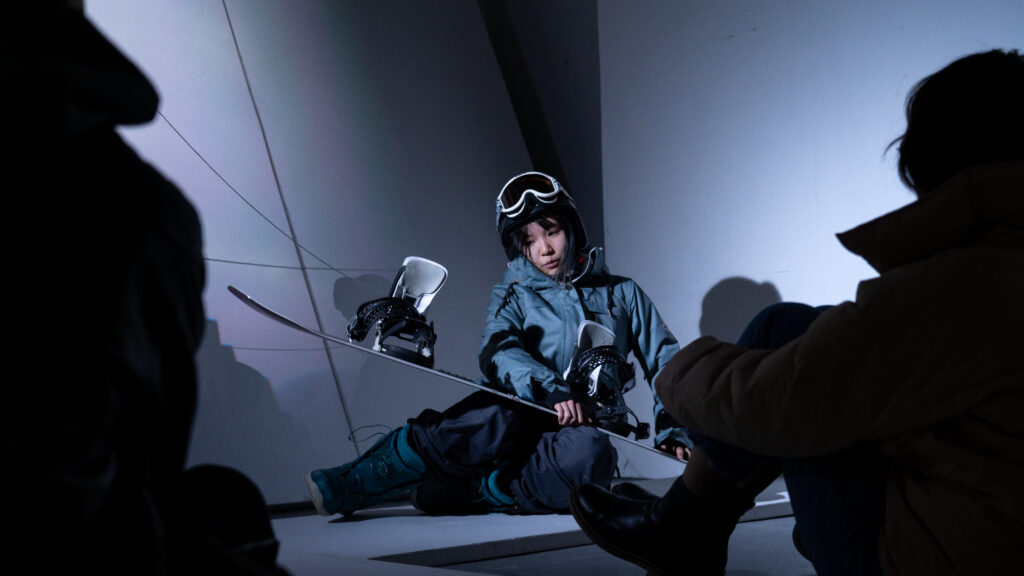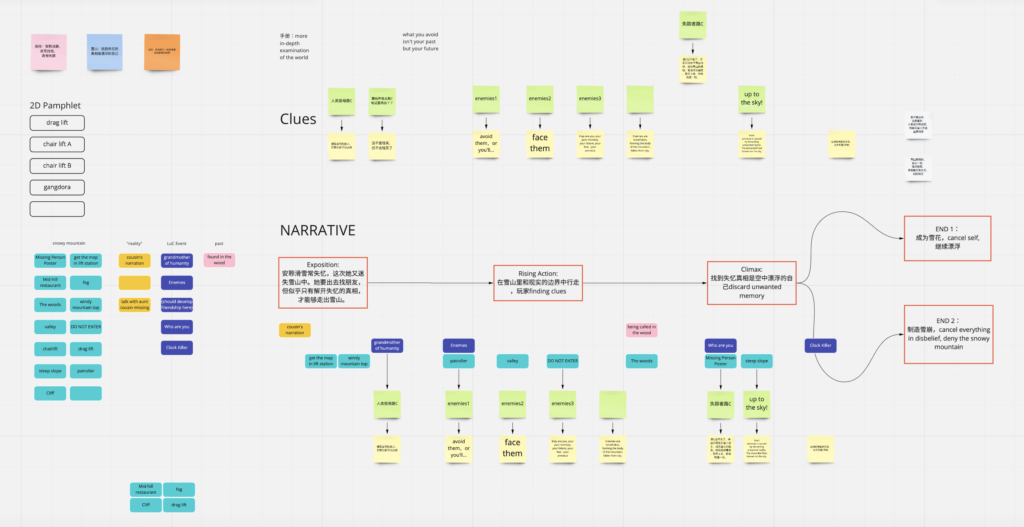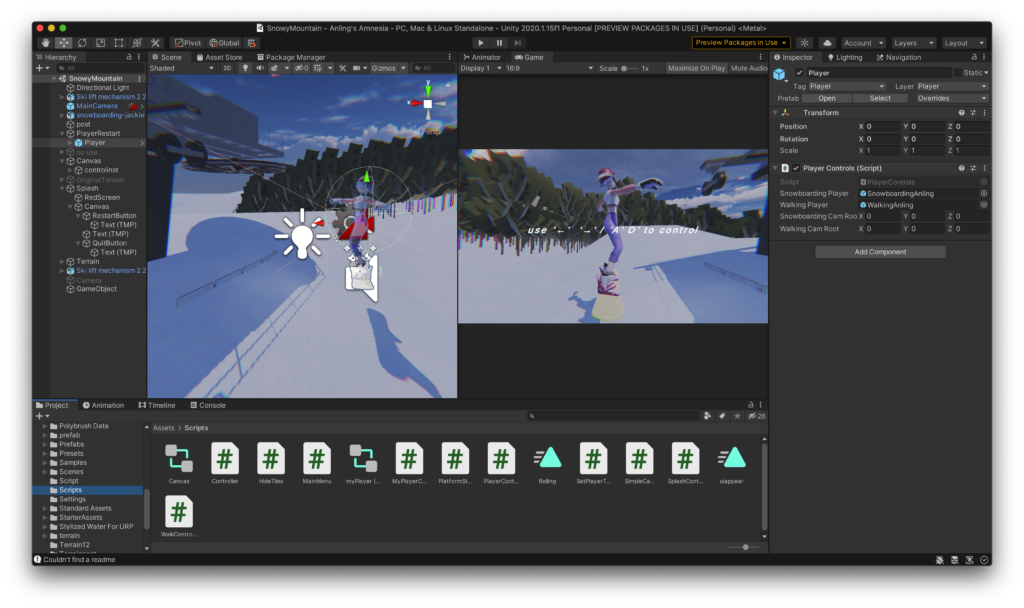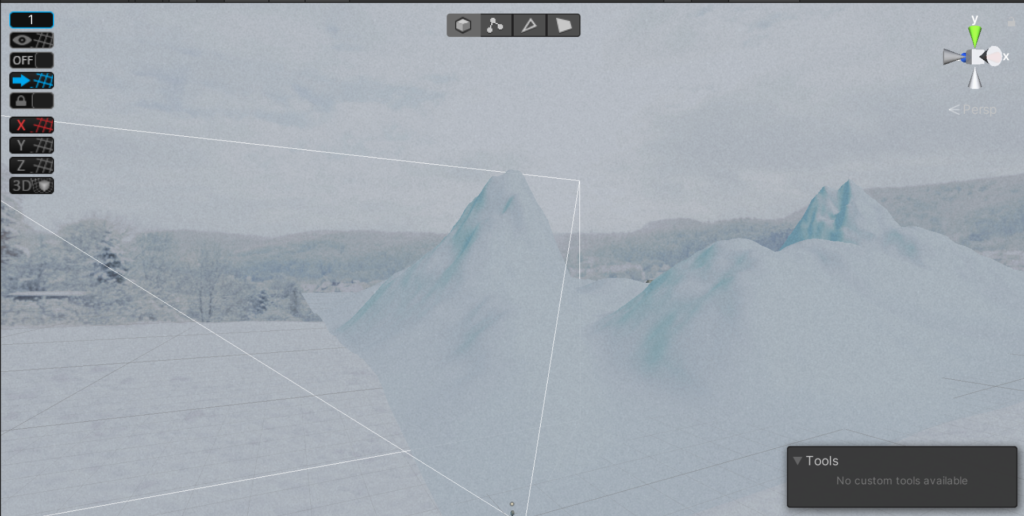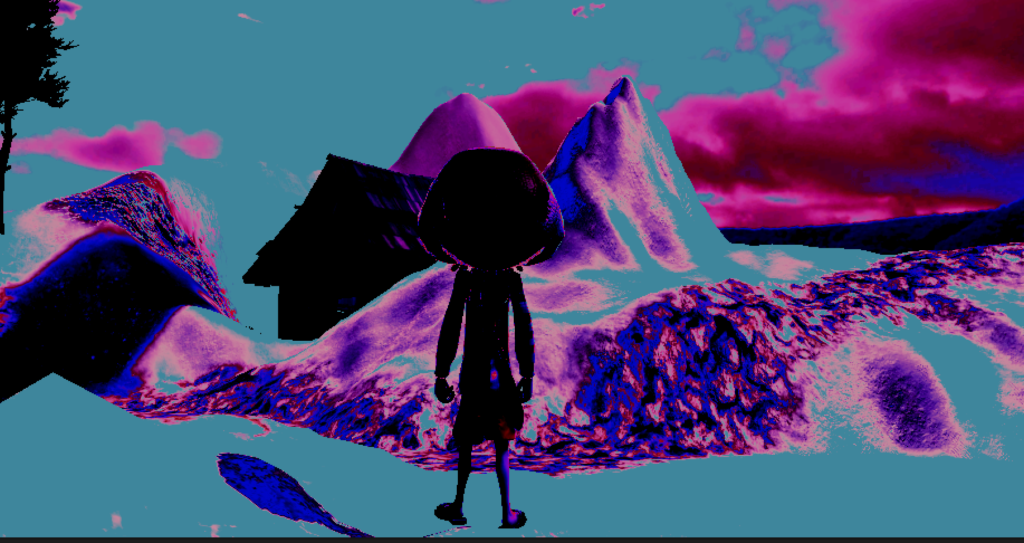Snowmare
Snowmare is an experimental project in a hybrid form of live-action, video game simulation, performance, and text. Originally based on the magic realism short story collection Anling’s Amnesia, the project recreates the nightmares of a snowboarder girl lost in the mountain.
Snowmare (game)
video game software
2021
This digital model explores the materiality of the ski resort in multiple layers. In the subjective perception of the protagonist, the ski resort is an illusion, a vast bewildering system that works according to rules, full of organs and incomprehensibility. On a spiritual level, it is her surrealist dream world. However, in the material world, the ski resort is a capitalist playground that man has transformed with nature. The unresolvable conflict between these two perceptions results in glitches. At the narrative level, the glitch manifests itself as the protagonist’s memory loss – an act of her resistance, self-defense, and fear when perceiving the real world. Most of the game uses modeling that symbolizes the dream world, while the live-action footage in the camcorder, which records the lost memory of the protagonist, hints at the real world.
In the game version, the player navigates through passages in the snowy mountains modeled according to the terrains in Niseko, Japan. The design challenges the usual restart mechanism in video games – in each “game over,” the protagonist will rise in the air and never fall again. When a new round of the game begins, a newly created protagonist replaces her. As the number of deaths increases, the sky is obscured by floating bodies. Through meta-gaming mechanics, the game explores the relationships between waste/artifice, memory/narrative, and individual/totality.
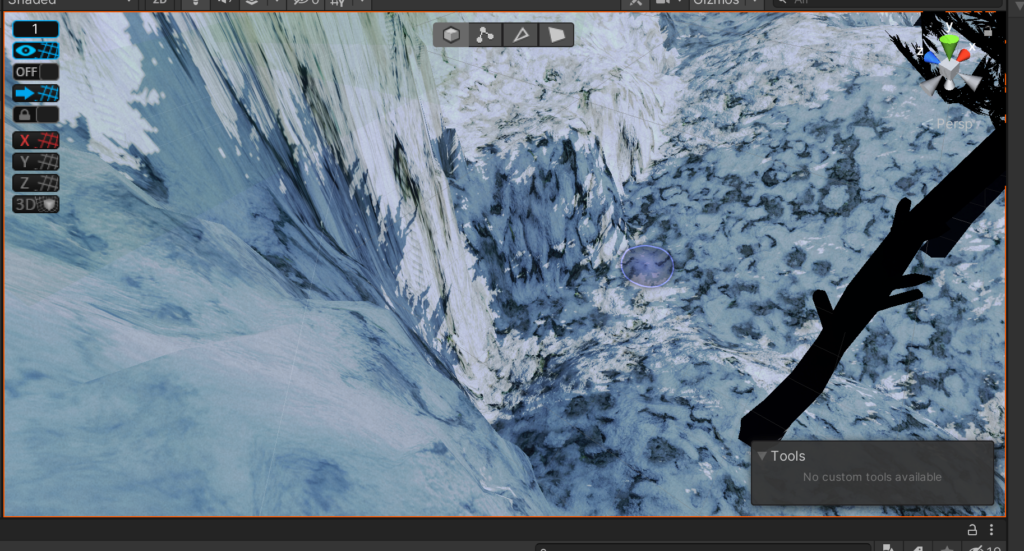
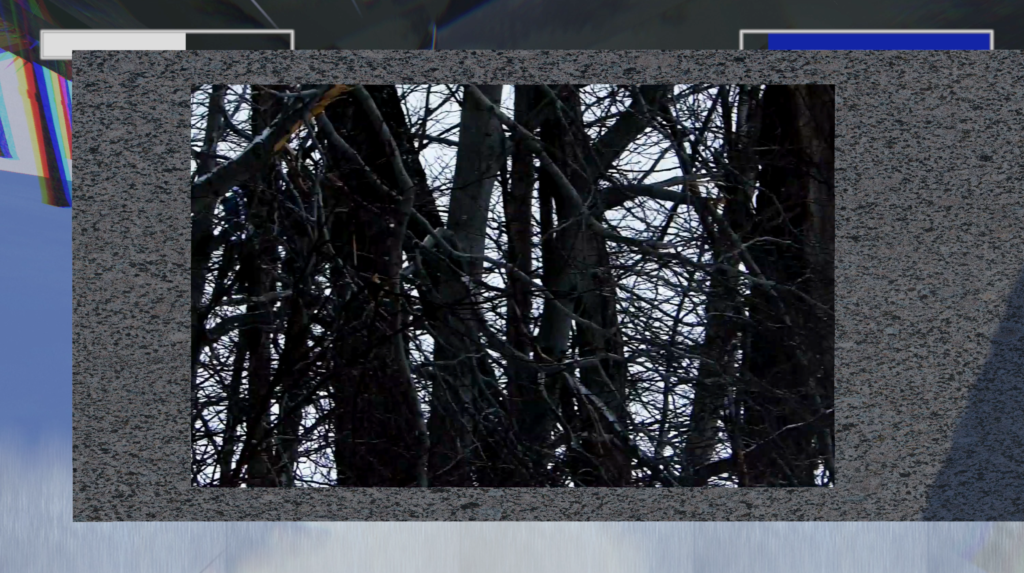
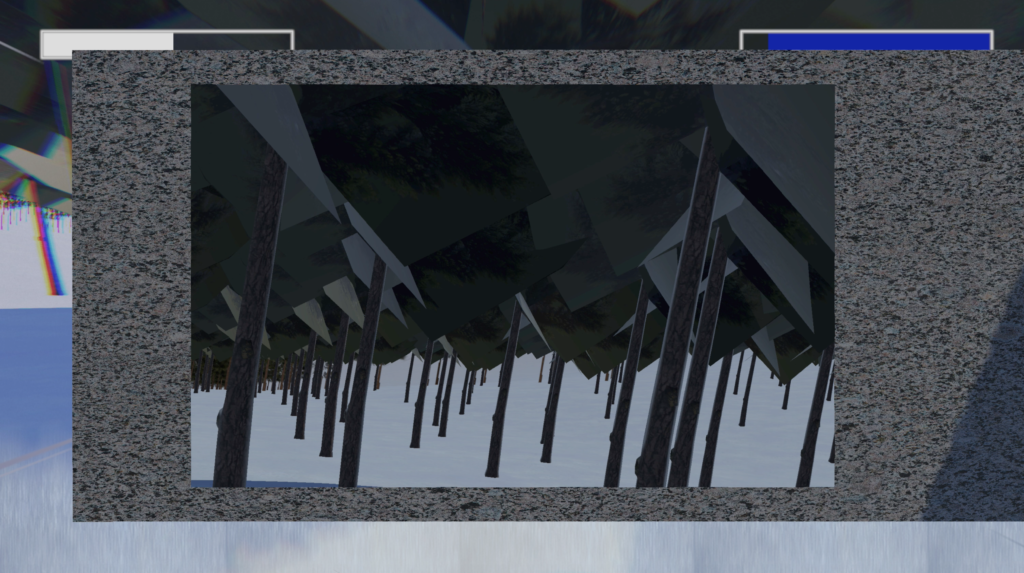
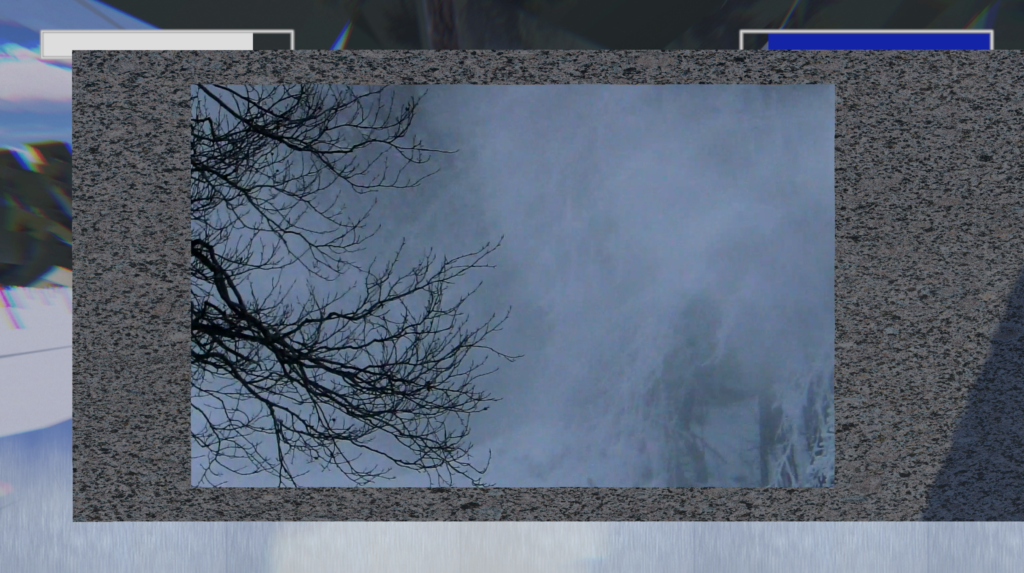
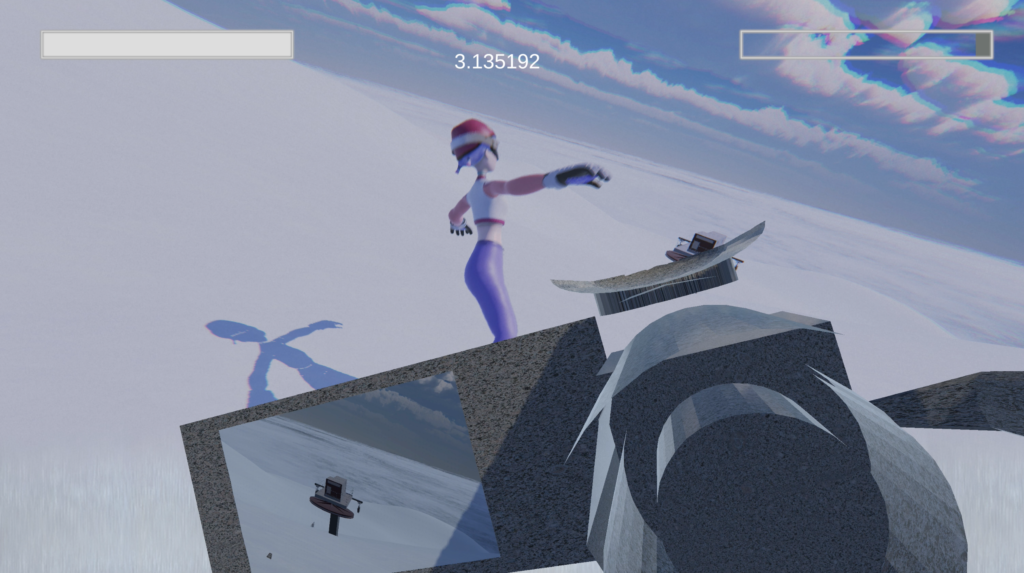
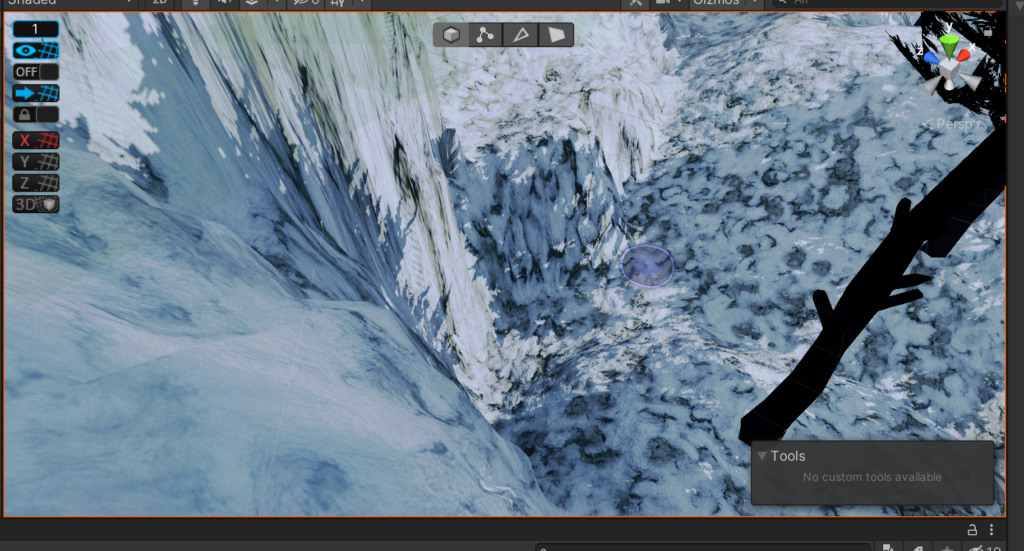
Snowmare (performance)
Projector, wire, computer, keyboard, mouse, movable wall, and snowboarding equipment
17’50”
2022
Snowmare is an interactive multi-media performance enacting nightmares of a snowboarder girl lost in a snowy mountain. Accompanied by a 2-channel real-time rendered video program, the show induces the audience to decide the performer’s journey through a controller. The video channel on the backdrop projection displays sceneries while traveling across psychological landscapes in an infinite, deserted snowy mountain. The other channel on a bulletin board displays a worldview map of the mountain, marking the snowboarder’s coordinates. The set constructs a multi-media environment connected by wire in an analogy of wire rope in aerial lifts.
The static noise – the ‘snow’ – constantly interrupts the performance. As an indicator of analog signal loss, snow implies the disconnection between self and whatever is considered external. The performer, who sits so closely among the audience but is simultaneously unapproachable, seems to exist in a parallel reality in the fashion of sleepwalking. The equipment protecting the snowboarder from extreme weather also deprives her of sensory, locking her in an internal disconnection that manifests itself as sleep paralysis.
The audience interacts with the performer and the controller, waking someone up from entangled nightmares. The control they are granted over the performer and the branching path – both in narrative and geographical -, is also challenged by disruption and discontinuity. In the end, the work denotes the source of fear as others – human relationship and the futility of understanding. However, immersed in the disturbing approaching of the snowboarder’s nightmares, the audience can glimpse the snowboarder’s fear, which leads to empathy as a cure.
